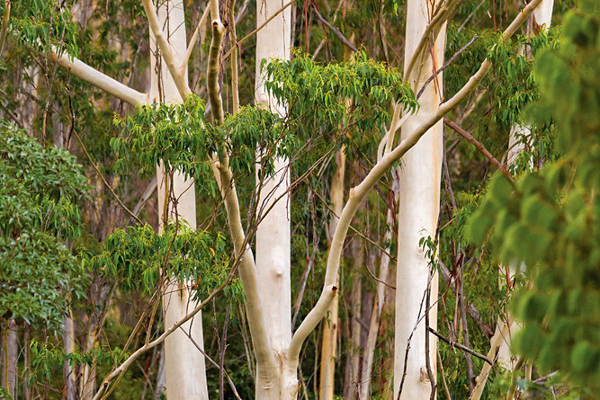
Mapping plantations
We manage around 34,000 hectares of hardwood timber plantations.
Harvest plans for current and upcoming hardwood plantation operations are published on the Plan Portal.

We manage around 34,000 hectares of hardwood timber plantations.

Unique and special wildlife values are assessed and protections are put in place before harvesting.

After the final harvest, we replant 1,100 seedlings in every hectare to regrow the plantation for the future.
We manage around 34,000 hectares of hardwood timber plantations. Maps are available at the following links:
Hardwood timber plantations have been planted for timber production. While they are planted with native species that occur naturally in the region, plantations are not naturally occuring native forests.
Hardwood timber plantations are grown for 30-50 years before they are harvested and replanted with a mix of native species for future timber production.
The trees in timber plantations were all planted at the same time, which means all the trees are ready to harvest at the same time. Plantation trees are all harvested in a single operation and then the entire area is replanted.
Before plantation harvesting, there is a detailed planning process. We:
Timber plantations are independently authorised by the Department of Primary Industries and Regional Development. A list of current Authorised Plantations (Public Register) is available on the Department of Primary Industries website.
Our planning process includes environmental assessments and independent unique and special wildlife values assessments are also completed by the Department of Primary Industries and Regional Development.
Detailed harvest plans are developed and published on our Plan Portal.
Harvest plans include specific measures to manage koalas include permanent retention of habitat along riparian corridors and temporary exclusions are put in place if a koala is sighted. Timber harvesting crews are provided training in koala search and identification and maintain constant vigilance.
Some timber plantations contain ‘retained vegetation’, trees and patches of trees that were already growing in the areas before the plantation was planted, and ‘habitat trees’, which are trees that pre-date the plantation and are typically larger than the surrounding planted trees and contain features such as hollows. These trees are protected and not harvested.
Most plantations also contain some ‘ingrowth’, which means trees that have naturally regenerated within the plantation after it was planted. This process is typical in Australia, where surrounding forest trees can readily spread their seed over large distances. Ingrowth can be harvested along with planted trees if they are of a size and quality to provide useful wood products.
Once a plantation is harvested the area is replanted by hand with 1,100 new trees in every hectare.
We harvest seeds from seed orchards in local forests as well as from trees throughout State forests with good genetic qualities and raise them as seedlings at our Nursery in Grafton, to ensure the next generation of seedlings grows into strong and robust trees and high quality timber. Hardwood timber plantations are planted with a variety of eucalyptus (such as blackbutt, blue gum, flooded gum and Dunn’s white gum) and corymbia species (predominantly spotted gum) that are native to northern NSW.
We complete weed control at the beginning of a timber plantation's 30-40 year life cycle to get new tree seedlings established quickly so that they out-compete weeds. The most effective way to do this is by spraying the area before the new seedlings are planted.
Timber plantations are only grown on previously cleared land - that means new trees are only replanted within the same plantation footprint again and again. Native forests are never converted to plantations.

View hardwood plantation harvest plans on our Plan Portal.

Our open data site includes hardwood plantation mapping.

Weed control is completed before replanting.